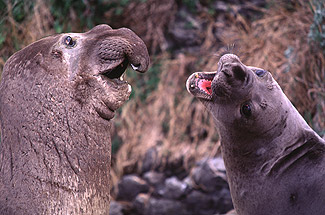|
 Did
you know your RAW format digital image files may be unreadable ten years from now? Because they are not constructed according to any standard, and because computer technology and
operating systems change at an incredibly rapid rate, in the future it may be impossible to find a computer, operating system, and RAW file conversion software that will all work
together with the RAW files you make today. The fact that prints you make now may outlast the RAW files from which they originate is a very sobering notion. I hope what follows helps to
illuminate what for many is a confusing subject. Did
you know your RAW format digital image files may be unreadable ten years from now? Because they are not constructed according to any standard, and because computer technology and
operating systems change at an incredibly rapid rate, in the future it may be impossible to find a computer, operating system, and RAW file conversion software that will all work
together with the RAW files you make today. The fact that prints you make now may outlast the RAW files from which they originate is a very sobering notion. I hope what follows helps to
illuminate what for many is a confusing subject.
The
Problem
Currently, nearly every digital camera make and model produces RAW files in its own unique format. There are no standards. This means software specific to a camera's make and model
is required to convert that camera’s RAW files into something more useful like TIFF or JPEG files. Your camera probably came with such software. Third party RAW conversion programs
like BreezeBrowser or Adobe's Camera Raw will convert RAW files from dozens of different cameras, but each of these "main" programs contains the dozens of smaller programs
required to do this. The software modules required to support newly introduced cameras are usually obtained by software developers from the camera manufacturers in the form of SDKs, or
Software Development Kits. There are now more than 50 different RAW formats, with a new one introduced nearly every time Canon, Kodak, Konica, Minolta, Nikon, Olympus, Pentax, or any
other manufacturer introduces a new digital camera model. In ten more years there could be hundreds, if not thousands, of different RAW formats. The myriad of unique RAW formats is a
very serious threat to the long term usefulness of every photographer's RAW files. Here’s why.
In
ten years or so the shiny new Nikon D70 and Canon 20D cameras of today will be as obsolete, and perhaps more obscure, than 8-track
tape players. By then it will probably be impossible to find newly written software to read RAW files produced by ten year old cameras, and the RAW file conversion software of today
could well be incompatible with the computers and operating systems in use ten years down the road. Camera makers will obviously not keep updating such old software to run on new
computers and operating systems. This costs them money and it might delay your purchase of a new camera too. In fact, For instance, Canon dropped support in their SDK
for the RAW format used by the D30 just five years after the camera was introduced. At the very least this means newly developed programs will probably not include support
for D30 RAW files. At the worst it means that if existing Canon D30 conversion programs do not work with the next generation of Windows or Macintosh operating systems, D30 RAW
files will quickly become of less use than faded Kodachrome slides. Cameras like the 1Ds, 10D, and 20D are not so many years behind the D30. It may now be dawning on you that there is a
very real reason to worry about this issue. If the situation I have just described remains unchanged, it is painfully obvious that digital RAW files could have a far shorter useful life
than any color film.
Why
does the problem exist?
RAW files are just that, raw. Unlike other file types, RAW files contain pieces of information that relate directly to each photosite (pixel) on your camera's image sensor. These
pieces of information must be processed according to how the image sensor is constructed physically and electronically. Since each new digital camera usually contains an image sensor
different than the one in its predecessor or even other models from the same manufacturer, the RAW files it produces are also different. This fact produces the situation we see today;
where cameras that use different image sensors, electronics, and firmware produce different RAW files that require different software for conversion to other more standard file formats
like TIFF or JPEG.
The
Solution
The obvious solution to this problem is for camera manufacturers to adopt an open and standard RAW file format. The idea is to leave everything that is unique, proprietary, and quirky
inside the camera where we will never see it, and leave us with files of a standard format on our memory cards and computers. Only the camera becomes obsolete, the files it creates do
not. But wait! If the differences in RAW files are due to physical and electrical differences between the sensors used in various camera models, how can a standard format ever exist? The
answer is fairly simple, but implementing it is not necessarily so.
In
order to do what we are talking about, each camera manufacturer must add hardware, firmware, or both, to translate the camera’s native RAW data into the new standard format before it
is written to the memory card and used by us. This is sometimes referred to as adding an abstraction layer. If this is done, the RAW data we see would not be as “raw” as it is now,
since it would no longer be a direct representation of the image sensor’s output. However, if a new RAW standard is developed with care and is implemented well by manufacturers, no
data would be lost in the translation and the files we get would still reflect all the quality each camera model has to offer. With this comes some assurance that our RAW image files
will be useable for a very long time. Once in place there is little reason anyone would want to change the format, especially when everyone's RAW files depend on the standard. If there
are changes to the standard, it is still far easier for software developers to support a few different standards than it is for them to support 50, 100, or 1000 different formats. This
frees software makers to improve their products instead of constantly contending with new and undocumented formats. When new camera models are introduced, the software already in use
would support them automatically. Pretty neat, huh?
Camera
manufacturers are not going to develop and implement RAW format standards on their own. Development and implementation of standards will cost them time and money, and it would also keep
their cameras in service longer before users need to buy new models. Photographers need to pressure camera makers to devise and implement a standards for the digital RAW format. We are
the ones who stand to lose our images and all of the work that has gone into them if this does not happen. If and when a standard is adopted, someone needs to write conversion software
so all of us who shoot RAW files can convert the files we already have to that standard. Once converted to the standard, the files are essentially safe from obsolescence. Adobe has
already done some of this work. They have created a proposed standard format called DNG (Digital Negative) and they have offered
it free of charge to anyone who wants to use it. Adobe has also created a converter that will convert all existing RAW file formats to the DNG format. So far, no camera manufactures have
adopted the DNG format, nor have any offered standards of their own.
As
I write this I am reminded that all I had to do in order to keep my film files in perfect condition for more than twenty years was to keep the film dry and dark at reasonable
temperatures. I am again finding it hard to remember what was wrong with film. Since its inception, permanence has been
an integral part of photography. Sadly, our prints could have more permanence than our "negatives" in the digital age.
I
am confident that RAW file standards will emerge, but this may not happen in time to save the RAW files we create today. In spite of what you may have heard, digital photography is still
in its infancy. It is about where 35mm photography was before film makers decided how far apart the sprocket holes should be. We still have a long way to go before we can count on our
RAW files lasting as long as our old color slides.


PS
- Learn more about this topic here.
With
these problems related to RAW files, you may be wondering why more photographers don't use JPEG files instead. In my view, the ability to use RAW files is perhaps the greatest asset of
digital photography. RAW files always give photographers the best chance to produce the best images. Under some circumstances the JPEG files produced by cameras can be almost as good,
but only if the exposure and white balance are set perfectly at the moment the photograph is taken. When making prints, especially large ones, it is always possible to exceed the quality
of the equivalent JPEG file when working with RAW files. Another factor is one of choice. When set to produce JPEG files, the camera starts with the same data contained in a RAW file,
but the data is processed immediately after the image is captured. It is processed according to your camera settings together with settings chosen by logic inside the camera. Altering
these choices after processing often results in lost data and inferior images. RAW files allow the photographer to access more parameters to easily see how the image would look with
different settings long after the image was captured. This allows better choices under better conditions than one is apt to make in the field, and those choices can be made with no loss
of image quality. |